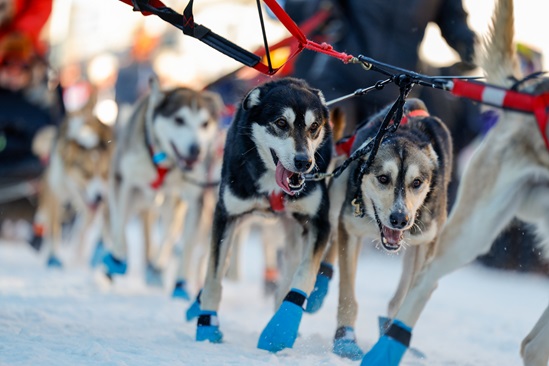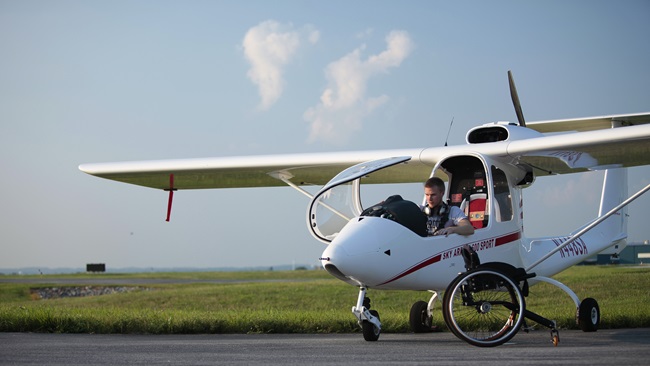Rescue-by-helicopter saves lost Utah snowmobiler
An air-and-ground race to find a snowmobiler missing in the Utah mountains for four days ended with a save when a volunteer pilot flying a donated general aviation helicopter located the man just hours before the arrival of stormy weather.
David Hales, 60, of Heber City had headed out alone March 9 for a 30-minute test of a friend’s snowmobile he had been working on. Things went wrong when he strayed beyond the groomed trails near his cabin and became disoriented. The situation became a life-threatening emergency when the sled got stuck in deep snow and ran out of gas.
Searchers thought the mission might end in a recovery, not a rescue, because if the snowmobiler had gone off on his ride dressed only in “Levi’s and a hoodie,” as reports suggested, his chances of survival in wintry conditions were slim, said volunteer pilot Brian Rowser, an experienced search-and-rescue pilot.
“We thought we were probably looking for a corpse,” he said. “We were told he was going out for a 30-minute test and most of his snow gear was left behind.”
Rowser, flying a Robinson R66 helicopter donated for search-and-rescue flights by the family of entrepreneur and philanthropist Steve Funk, a developer of the Refuge Air Ranch at Alpine Valley Airport, of Star Valley, Wyoming, joined the search on March 13.
The day’s weather was good, but a storm was moving into the area and expected to arrive that evening.
Rowser said he had been flying for about an hour and 40 minutes when he saw what looked like snowshoe tracks in the steep terrain below—but searchers considered the area he had been assigned to check a low-probability locale for finding Hales.
Rowser knew it would be bad practice to peel off and follow the tracks. Instead he continued methodically flying his search grid. Ten minutes after spotting the tracks, he found his man in a canyon 15 miles from Hales’ Timber Lakes cabin, well beyond the local groomed snowmobile trails.
“He was standing at the edge of a clearing and he waved to us. I flew up by him,” Rowser said.
The helicopter had to climb so Rowser could radio Hales’ location, at which point one of the searchers aboard the R66 saw Hales “face-plant fall into the snow, and he never got up again” before rescuers arrived, Rowser said.
Rowser flew over a snowmobile team searching five miles away to show them the way to Hales’ position.
Working in the crusted-over snow as the Robinson hovered just above the ground, rescuers loaded Hales into the aircraft, as shown in this news video, for the seven-minute flight to Heber Valley Medical Center. The turbine-powered Robinson R66 performs well at high altitude, has “a great power-to-weight ratio,” and can accommodate “three people and a good amount of gas”—all key qualities for a search-and-rescue mission in the high elevations of the Utah mountains, Rowser told AOPA later in a phone interview.
Hales’ probable whereabouts had not been the only sketchy information the searchers had been working with during the rescue mission. It turned out that rather than being clad in Levi’s and a hoodie, Hales was found wearing a heavy coat, snow pants, and boots. Fortunately he also had managed to light fires for some warmth during his ordeal.
The bad news was that he had eaten nothing but snow for four days. In the hospital after rescue, he told a broadcast interviewer he doubted he could have survived another day.

After the mission, Rowser—a professional pilot who in the summer of 2015 spotted two lost wilderness visitors within two weeks from an Aviat Husky also made available by the Refuge Air Ranch—notified the Funk family by email that their generosity had again “directly resulted in a life saved that would have no doubt been lost” had their R66 not been available for the search.
Funk “donates the use of the helicopter to search and rescue, and it has saved many lives. He’s been doing this for many years,” Rowser said, noting that he had flown 30 to 40 search-and-rescue missions between rescuing Christian Herrera at the base of a ridge in the summer of 2015, and spotting a dehydrated and exhausted David Hales in the snow.



